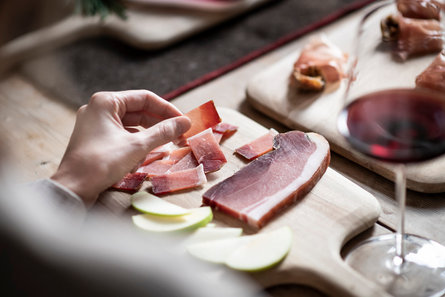He uses the sharpened bone, which looks a bit like a giant needle, to bore a hole in the ham. Working carefully, he draws it out again, sniffs it with his eyes closed and confirms with a slight nod of the head: this Speck Alto Adige meets the highest standards.
The horse bone, known as a “ham needle”, enjoys a venerable tradition in the butcher’s trade. “No instrument, regardless of how high-tech it is, can replace this natural tool,” says the food inspector. Because the bone is porous, it absorbs aromas in a matter of seconds and releases them just as quickly, allowing any number of Speck hams to be tested without generating conflicting smells.


